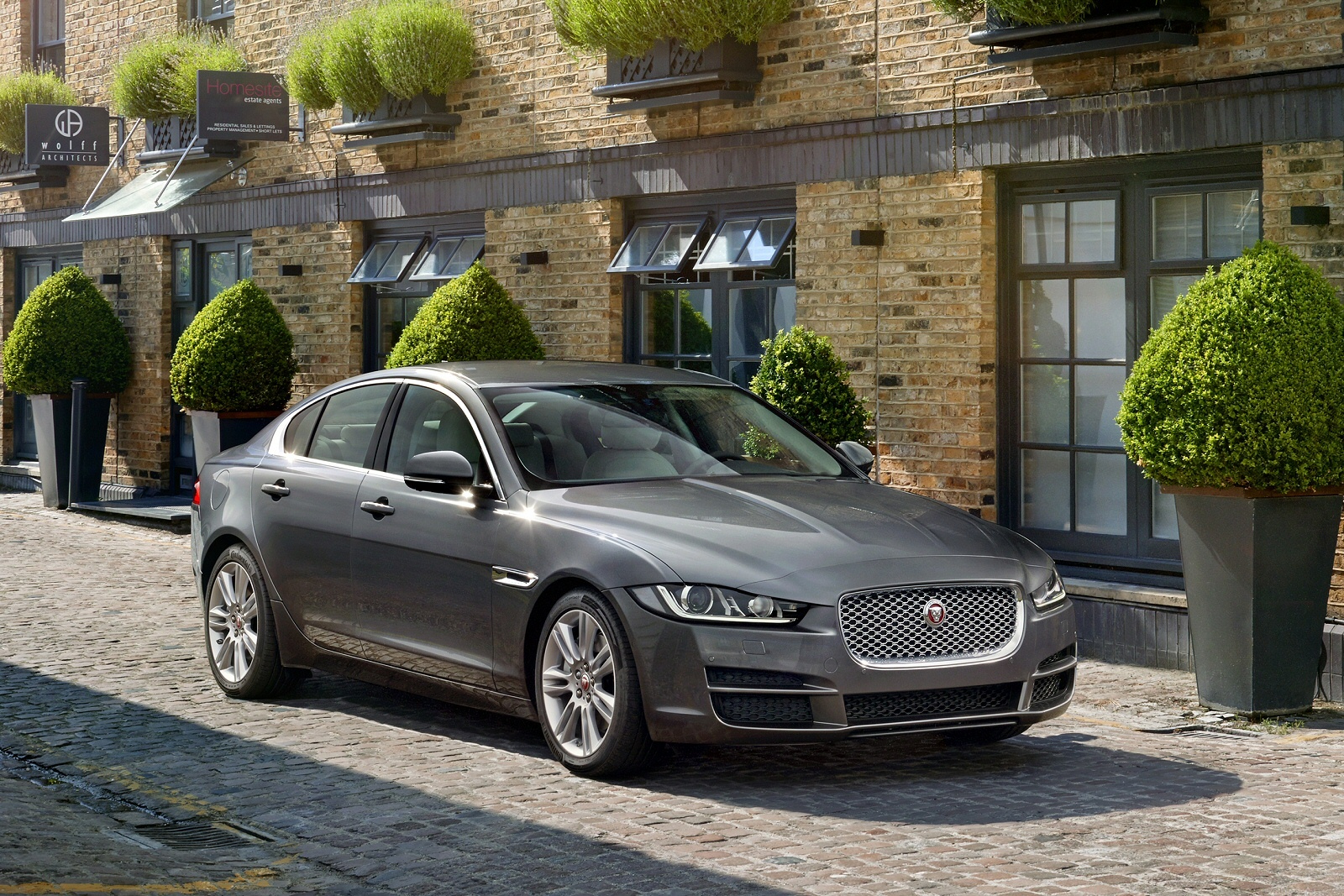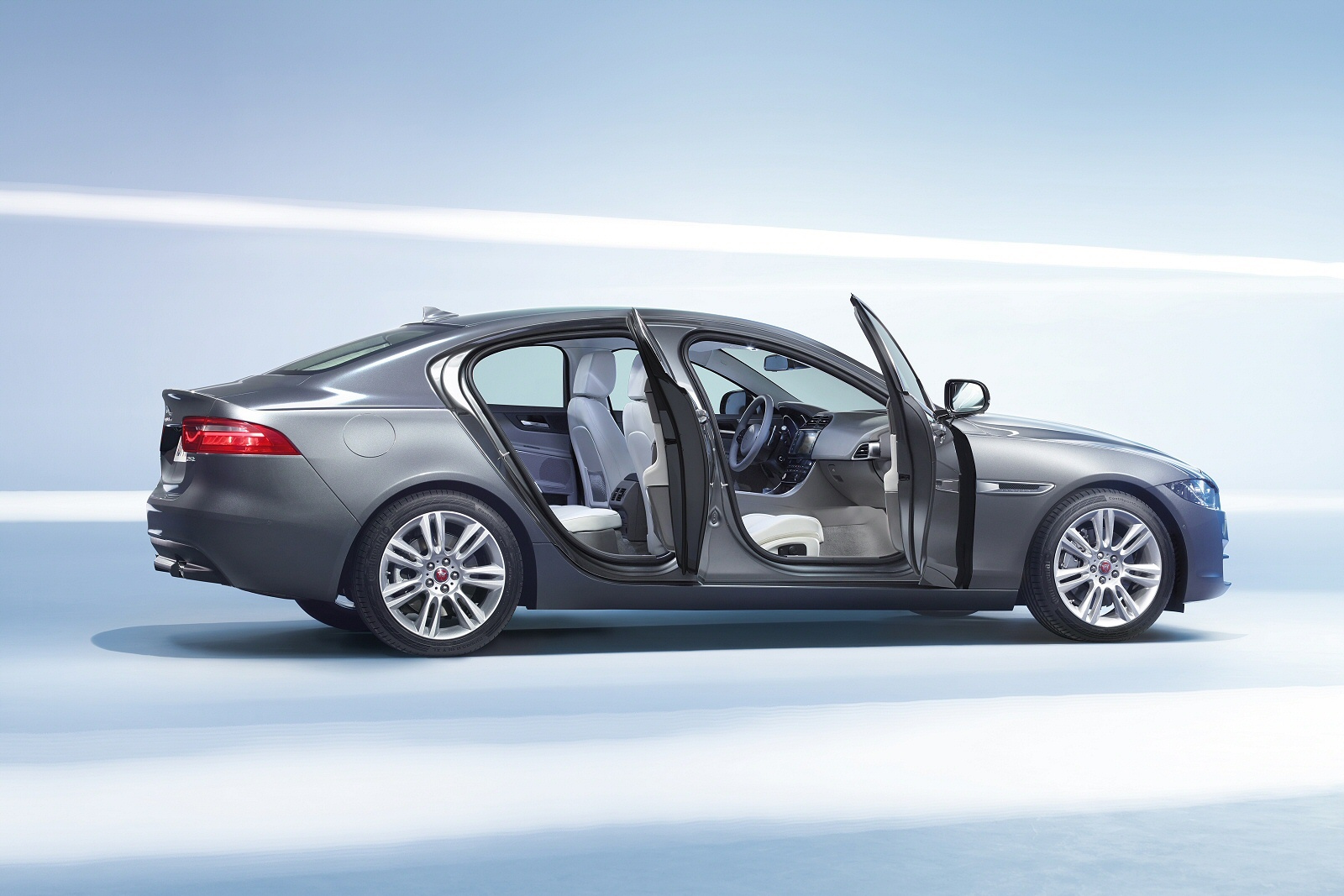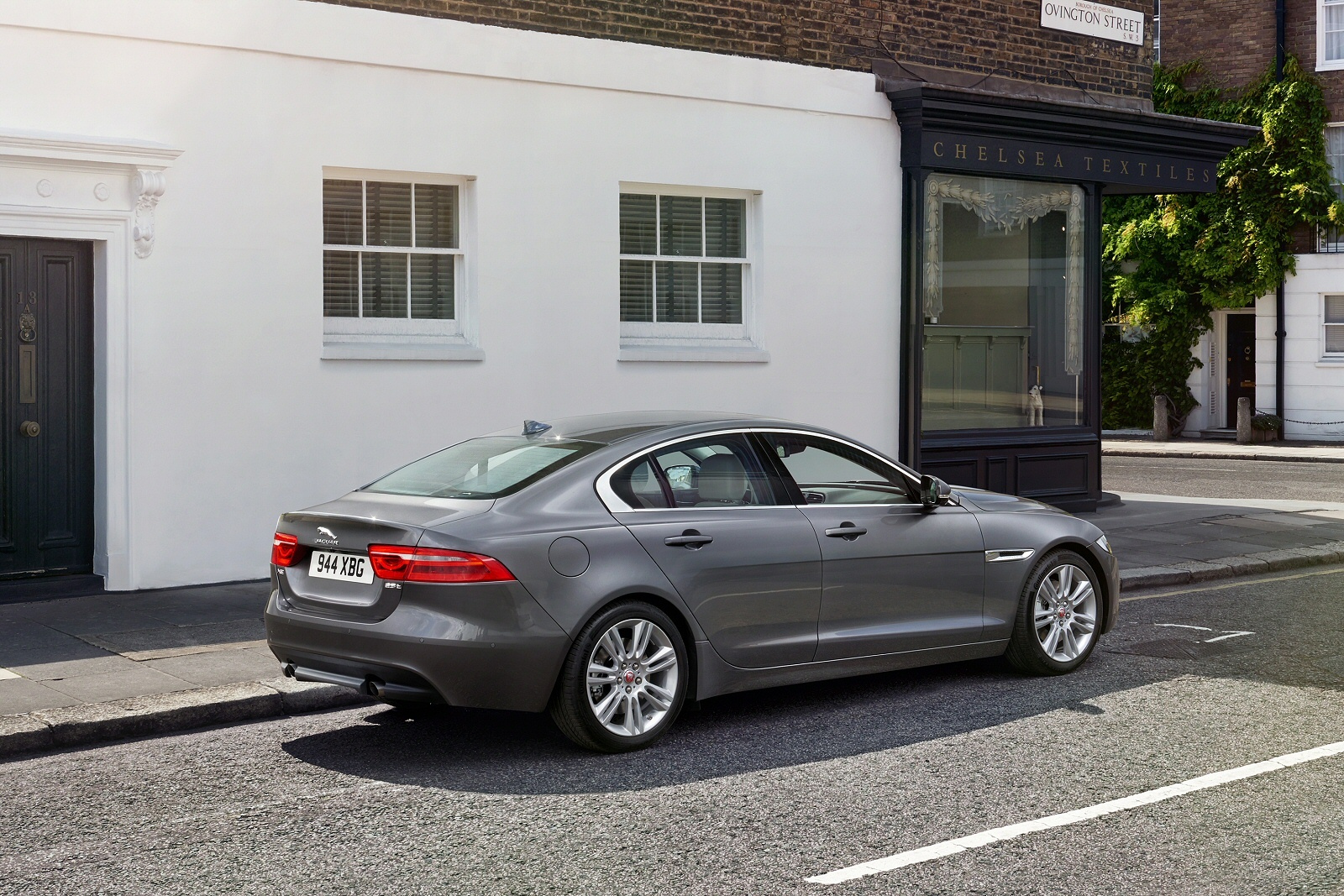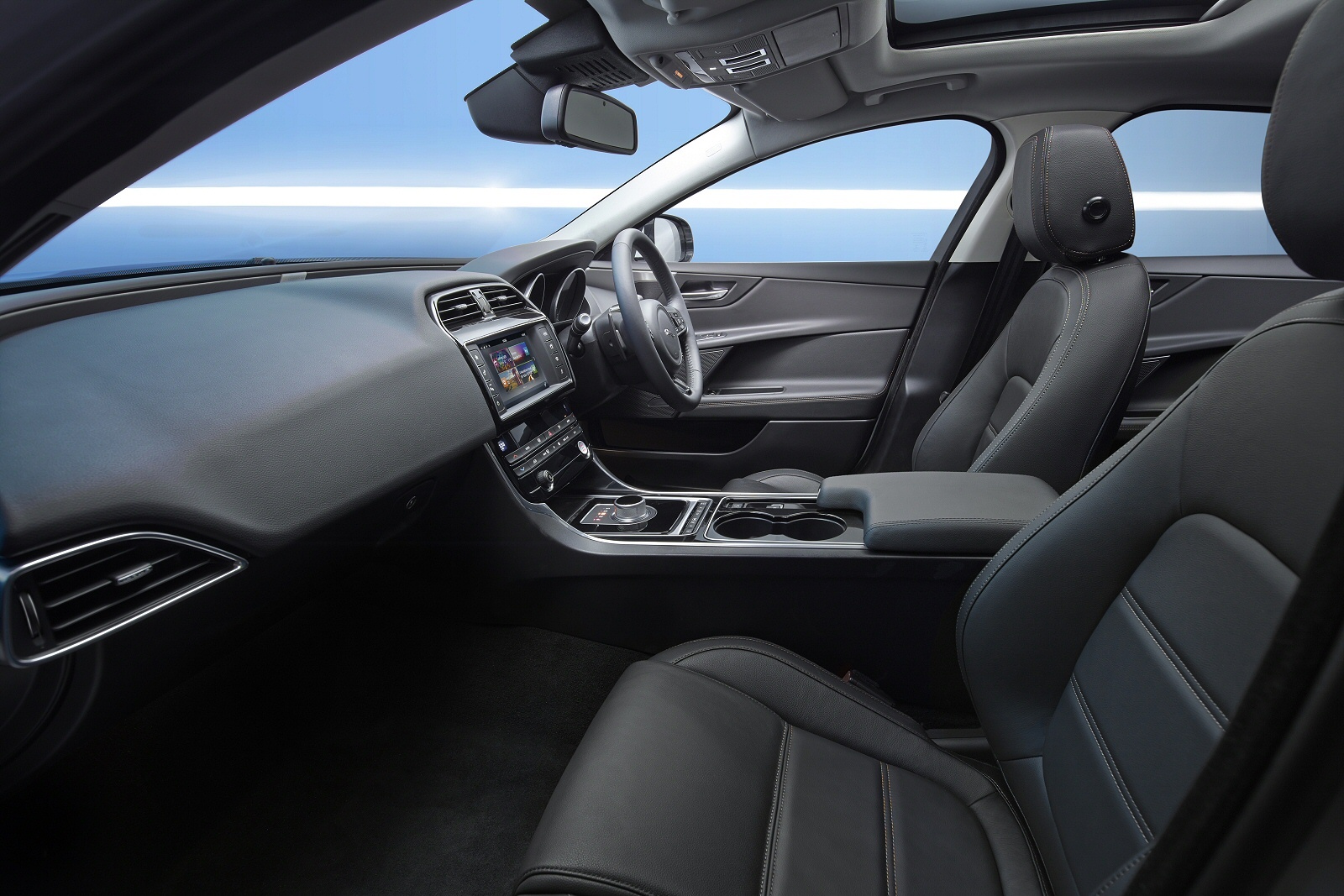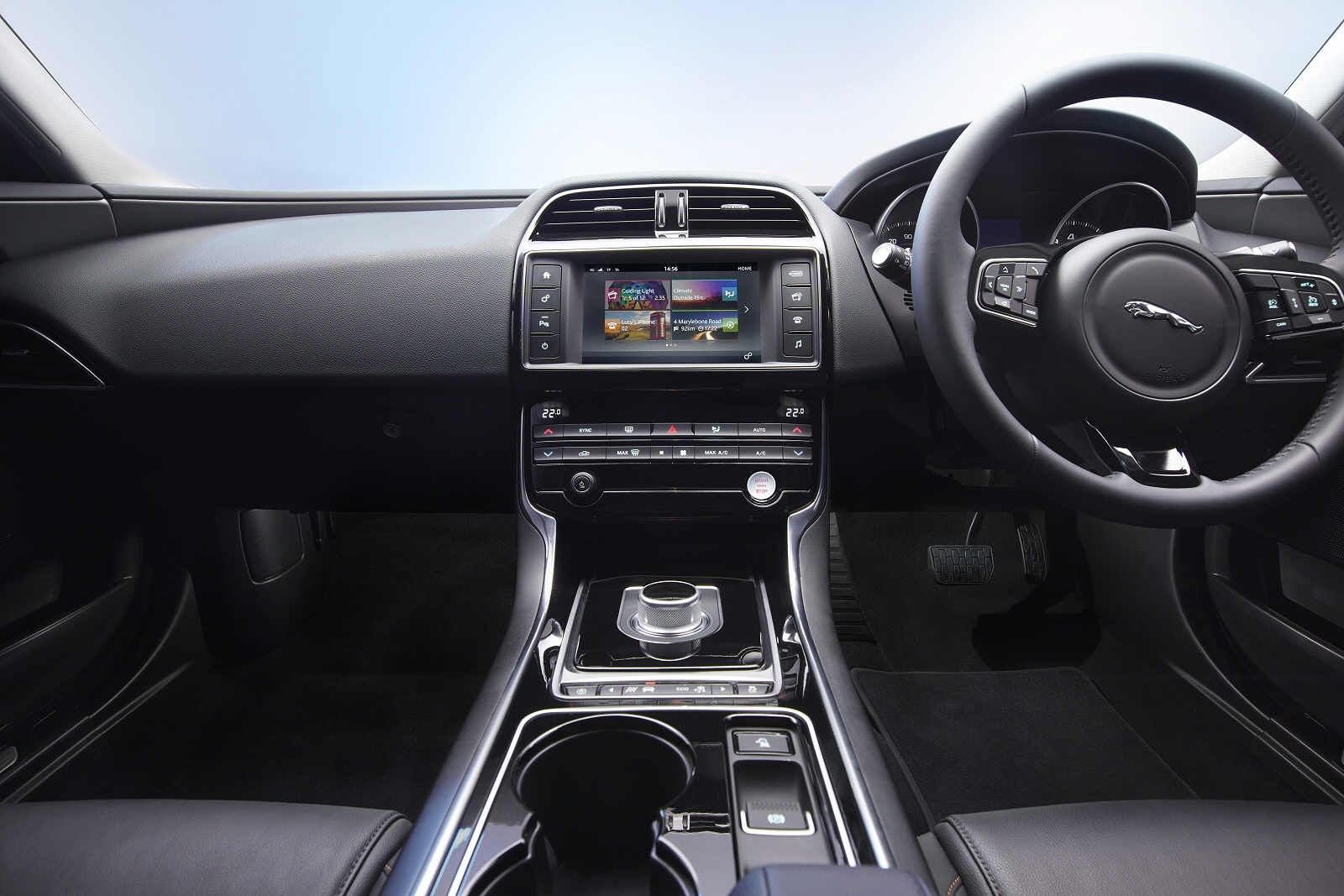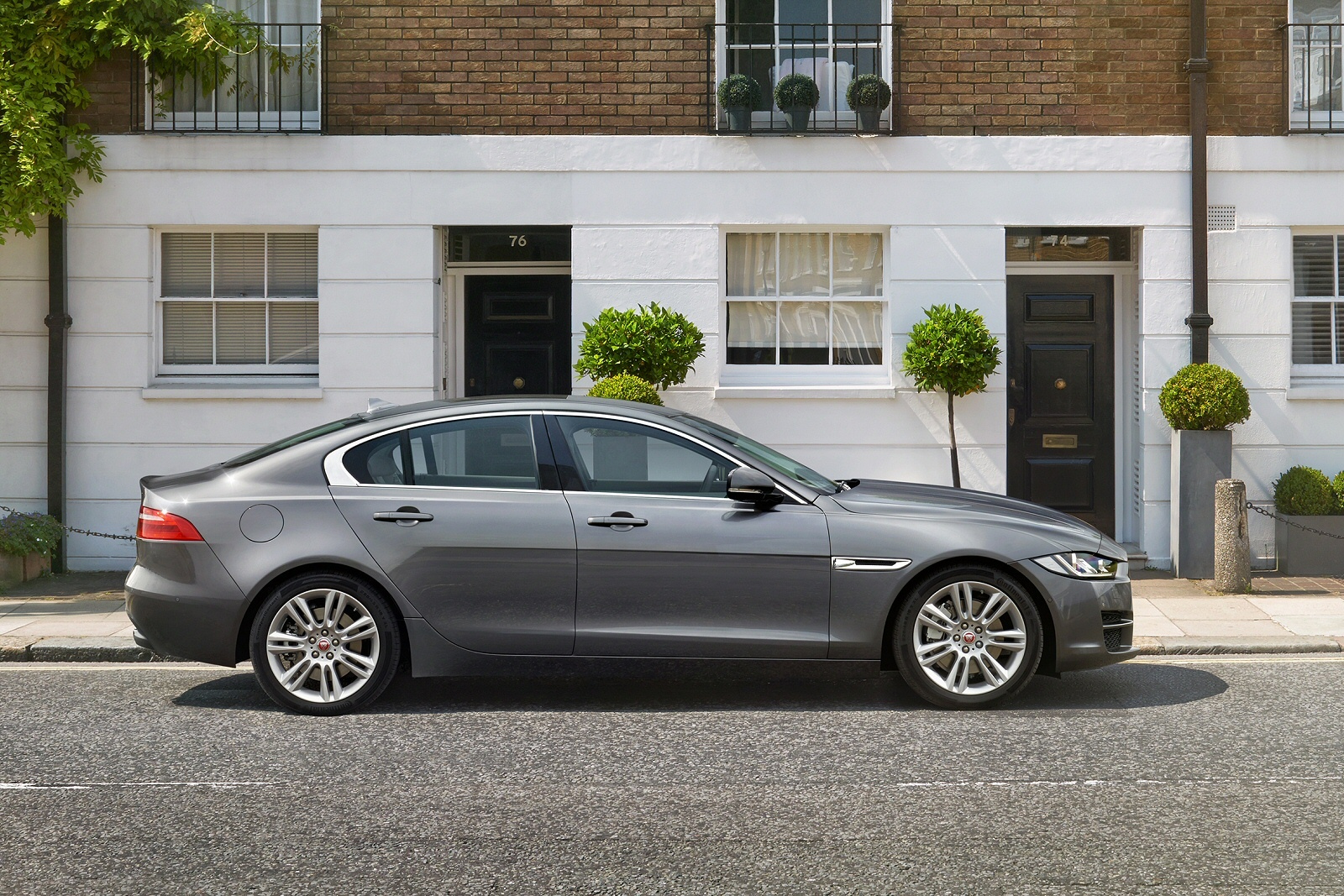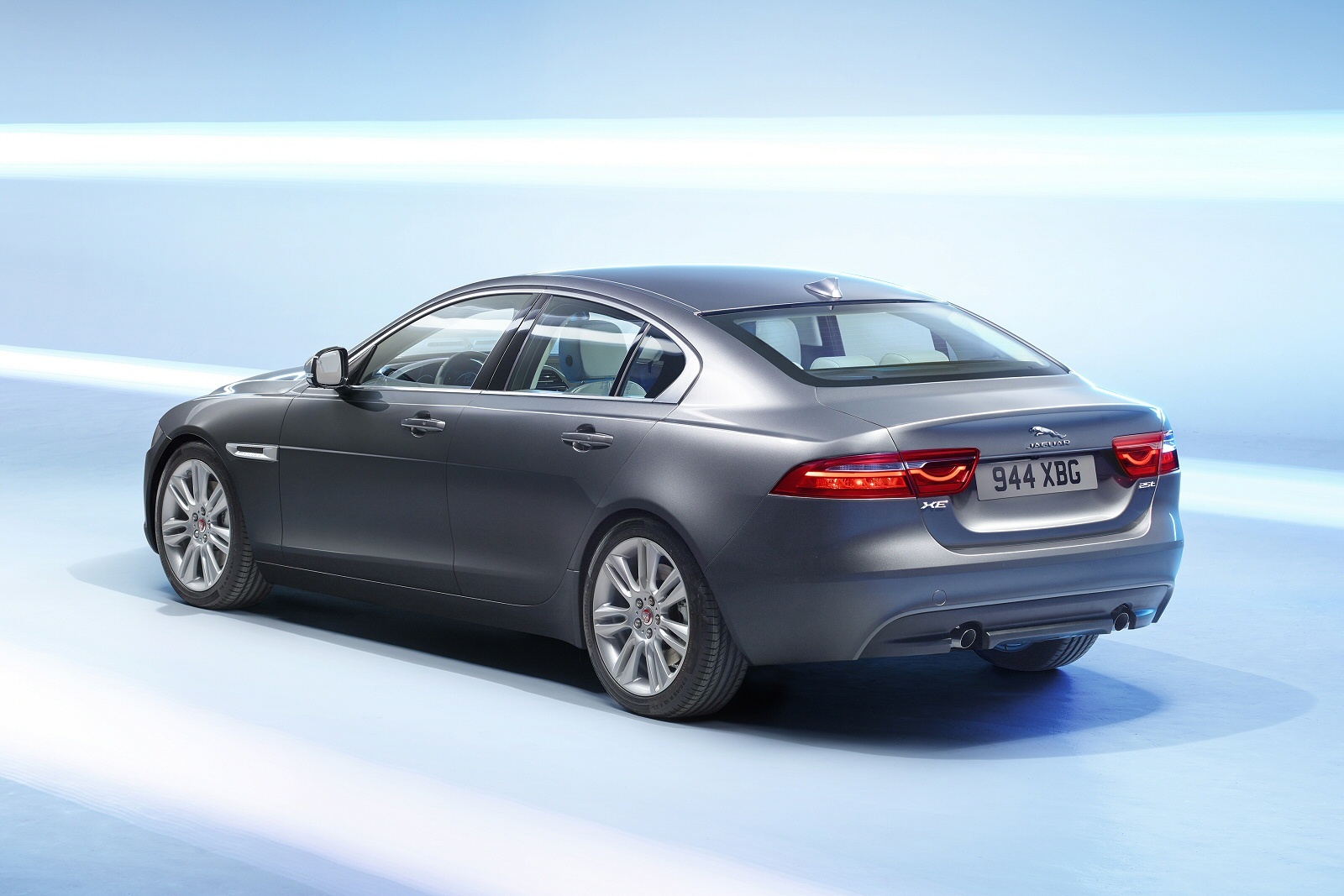Jaguar’s XE is expected to sell in bigger numbers than any Jaguar before. Andy Enright assesses its chances in a compact executive sector packed with talent.
When you compete in the same class as the BMW 3 Series, it’s a measure of real confidence to bill your contender as “the driver’s car in the global mid-size saloon segment”.
Yet that’s exactly what Jaguar has done – and a closer look at the XE reveals the reasons behind the bullishness.
The chassis is a 75% aluminium monocoque, light but immensely strong. The clean sheet design utilises a classically correct longitudinal engine and rear-wheel drive architecture.
More of the right stuff comes with a slick double wishbone front suspension with room for an extra set of driveshafts when the inevitable all-wheel-drive versions appear. Jaguar promises the best electric power steering in class and plenty of chassis goodies like torque vectoring by braking.
At present, the engine range includes a pair of brand new diesels from the modular Ingenium engine family. Both are 2.0-litre four-cylinder diesels with a choice of either a 161bhp power output and 280lb/ft of torque or a more muscular 177bhp and 317lb/ft.
Go petrol and you’ll get to choose between two turbocharged, direct-injection, 2.0-litre four-cylinder units: one with 197bhp and 207lb/ft of torque or another with 237bhp and 251lb/ft.
The flagship powerplant is the all-aluminium supercharged 3.0-litre V6 from the F-TYPE sports car. Rated at 237bhp with 332lb/ft of pulling power, this engine provides the XE S with some senior acceleration, 62mph arriving in 5.1 seconds, while top speed is electronically-limited to 155mph.
Six-speed manual gearboxes are standard for diesels, while petrol models get an excellent ZF eight-speed auto, which can be optioned on to the diesel variants.
The XE conforms to much the same design language forged by the XF in 2007. This bold step freed the company up to move forward confidently, spawning the magnificent XJ and F-TYPE shapes.
In many respects, the XE does look like a Russian doll miniature of the XF – a tactic already profitably exploited by its key German rivals. That means an aggressive grille, a strongly sculpted bonnet, a steeply raked windscreen and a fluid window line. The result is a car that cleaves the air like no Jaguar before, registering a phenomenally low 0.26 drag coefficient.
The interior is more spacious than the coupe-like profile would suggest. There’s that typically Jaguar enveloping feel to the front of the cabin, with an eight-inch touchscreen taking pride of place.
Automatic cars get the brand’s trademark rotary controller.
The rear seats can be optionally heated and offer a 40:20:40 split-fold – a first for Jaguar – and a through-loading feature.
Prices start at a little under £27,000 for the 197bhp petrol entry-level SE, with Prestige and R-Sport trims also offered. The 237bhp petrol model starts in R-Sport guise at just over £33,000, while the supercharged 3.0-litre is priced at almost £45,000.
Go diesel and you’ll be looking at almost £30,000 for a 161bhp SE, with the 177bhp models only around £500 more expensive.
The range steps up from SE, through Prestige, R Sport and Portfolio trim levels, with the 3.0-litre car the sole recipient of the S badge.
Even the entry-level model gets features like satellite navigation, cruise control, 17in alloy wheels, DAB digital radio and a multifunction leather steering wheel. All manner of options, from stereo camera roadsign recognition to blind spot monitoring and radar adaptive cruise control, can be fitted. There’s self-parking, a laser head up display and, perhaps the most intriguing feature of all – All Surface Progress Control. This traction management system comes into its own on snow-covered driveways and ungritted winter roads; even wet grass.
It works with the ZF auto gearbox and functions between 2mph and 19mph, activated by the cruise-control switches on the steering wheel. Having set the desired speed, the driver concentrates on steering and the car takes care of the rest, ensuring smooth progress without skidding and without the driver touching the pedals.
All manner of refinements have helped to produce exemplary emissions and economy figures. The lightweight chassis, the compact and light engines, the excellent aerodynamics and engine ancillaries that promote efficiency all contribute to the cause. There’s also an electric power-steering system that reduces emissions by 2% on diesel models and 3% on petrol cars.
When it comes to the models on offer, the standout performer is clearly the 161bhp diesel car, which emits just 99g/km – or, to put it another way, less than an entry-level Renault Twingo.
The combined fuel consumption figure for this XE is an amazing 75mpg.
When it comes to insurance ratings and residual value data, Jaguar also seems to think the numbers will work in its favour.
The Jaguar XE looks to be everything the X-TYPE wasn’t – bold, innovative, forward-thinking and able to level with the class best.
The British brand is on a roll right now and this compact executive saloon looks to continue that form line.
What’s most encouraging about the XE is that, despite chasing some bigger sales, the car hasn’t sold out on Jaguar’s design philosophy. If anything, it just serves to reinforce the fact that lithe, taut and progressive looks can indeed work in a more truncated body.
BMW, Mercedes and Audi have had it too easy for too long. With the XE, Jaguar could well gatecrash the party in style.
Facts & figures
Model: Jaguar XE
Price: From under £27,000
Engine: 2.0-litre four-cylinder diesel and petrol units plus 3.0-litre V6 unit
Performance: 0-62mph in 5.1 seconds, top speed 155mph (3.0-litre V6)
Economy: 34.9mpg combined (3.0-litre V6)
CO2 rating: 194g/km
(3.0-litre V6)
